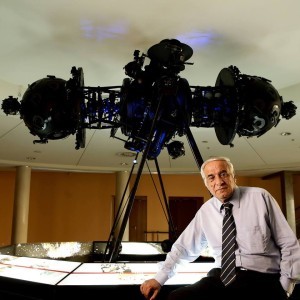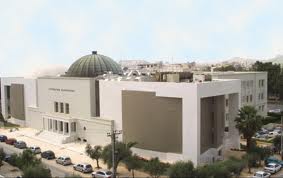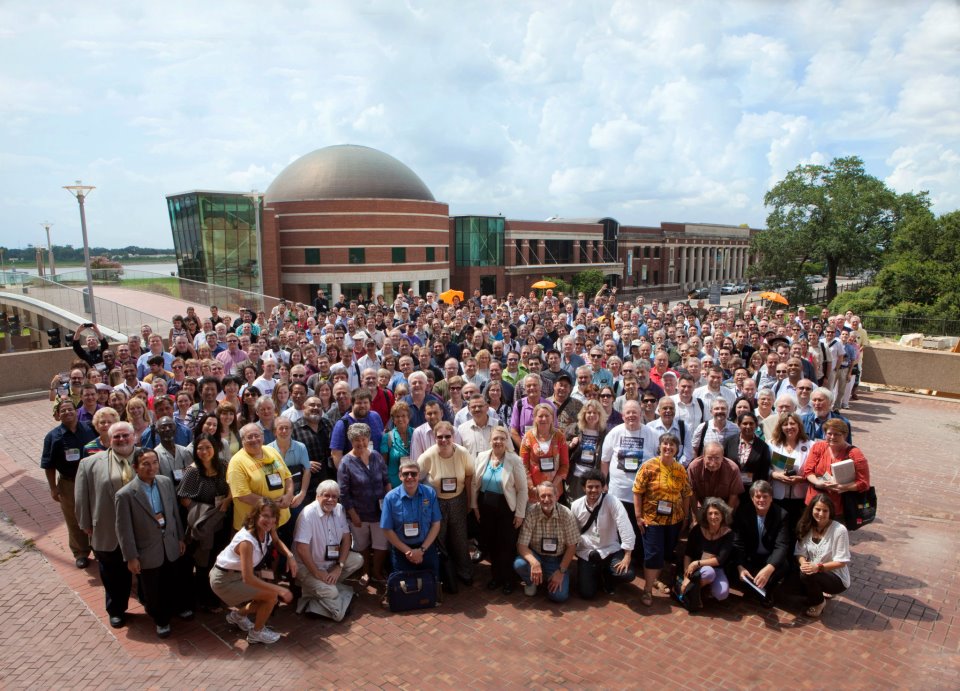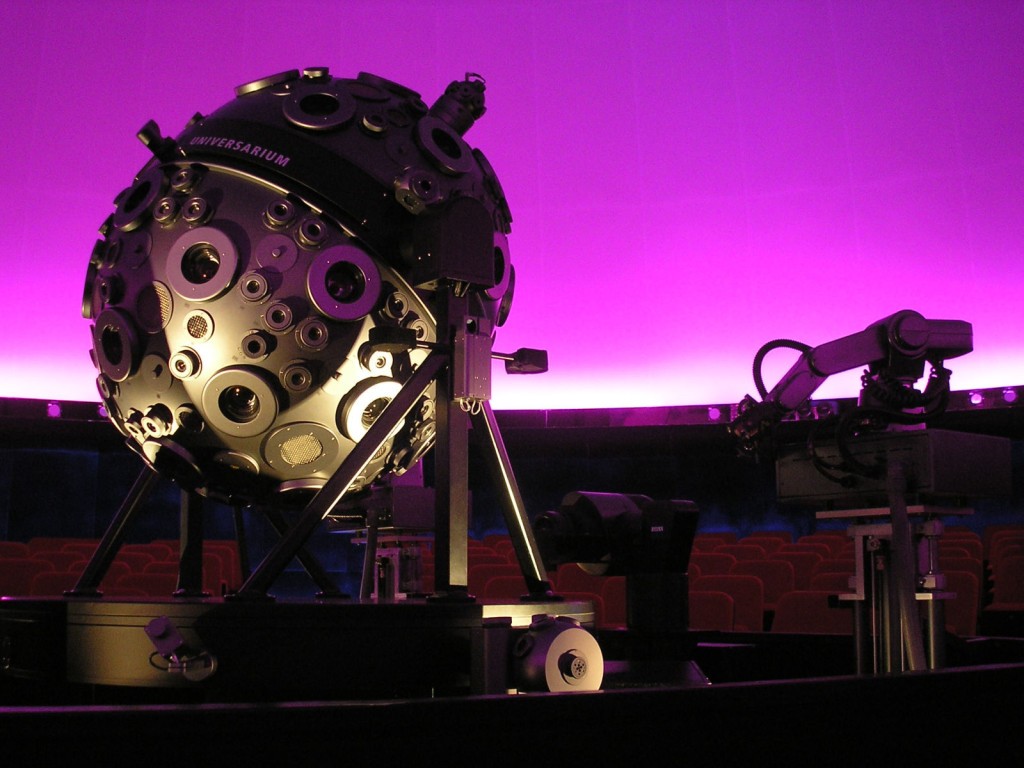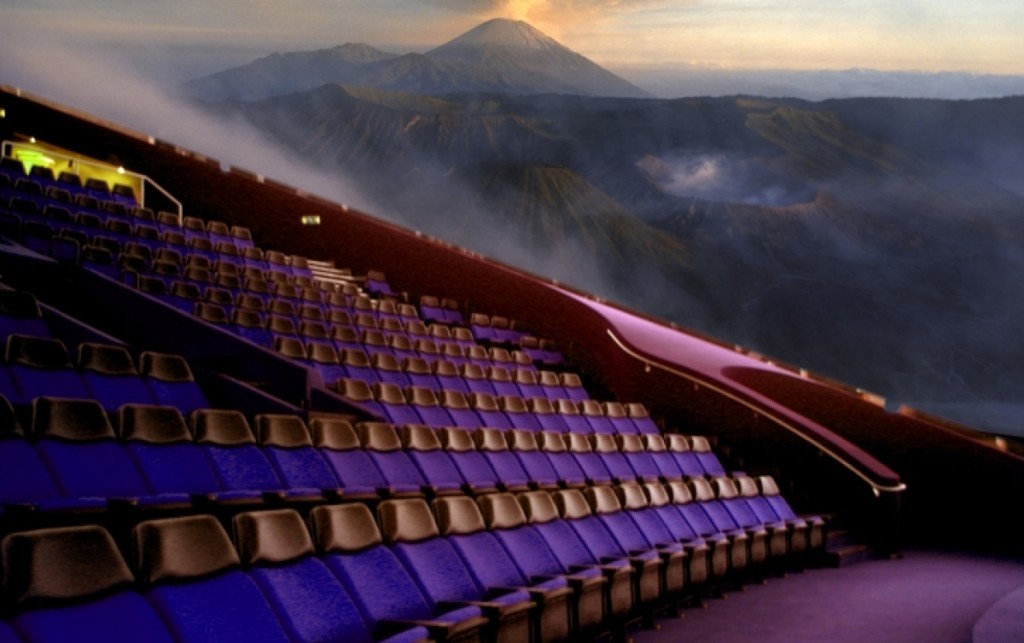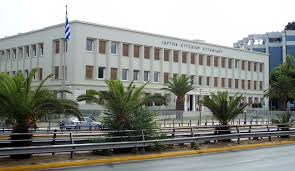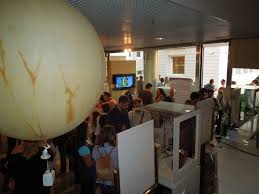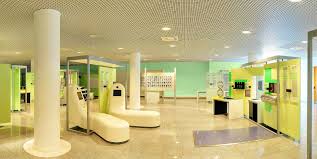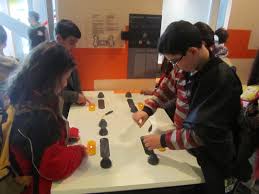By Dionysios Simopoulos, Greek physicist and astronomer
On the 3rd of November 2013, the New Digital Planetarium of the Eugenides Foundation celebrated its 10th Anniversary. Having already produced 21 digital planetarium shows and an equal number of Study Guides, having organized numerous public lectures, conferences and astro-photography exhibitions, and having so far attracted an estimated 3,500,000 visitors, the New Digital Planetarium continues to honor the last will and testament of our national benefactor Eugene Eugenides (1882-1954). But this shrewd businessman and ship owner, who established the educational public-benefit Institution which bears his name, would never have dreamt the extent to which it has developed since it was established in 1954.
The main mission of the New Digital Planetarium is to communicate the achievements in science and technology to the wider public, to inspire its visitors by demonstrating the nature of scientific inquiry and to cultivate their sense of curiosity and wonder about the natural world. Today, the scientific and technical staff of the Planetarium, utilize all the impressive creative and technical capabilities of modern audiovisual media and technology, to “narrate” the history of science in the most fascinating and enjoyable way.
The Background
Since its establishment in 1954 the key mission of the Eugenides Foundation has always been to implement the wishes expressed in the last testament of Eugene Eugenides, namely “to contribute to the education of the Greek youth in the fields of science and technology”. To attain this objective and at the same time to ensure its long term financial independence, Eugenides bequeathed a large part of his fortune to the Foundation. Indeed, from its inception to the present day, the Eugenides Foundation has operated and continues to do so without any State or other financial assistance whatsoever. Eugenides entrusted the administration of his estate and the execution of the terms of his will to his sister, Marianthi Simou, who made the fulfilment of her brother’s wishes her own life’s work, and did so with great success.
The late Eugenides, however, did not specifically define the directions that the Foundation should follow. He left that to the discretion of the Foundation directors. As such, Marianthi Simou, as the first governor of the Foundation, following the recommendations of her advisers, decided to add a planetarium to the Foundation’s complex. Thus, the original Eugenides Foundation building on Syngrou Avenue was inaugurated on the 7th of June 1966 and on the same day the first planetarium in Greece began its operation equipped with a Zeiss Mark IV planetarium projector, donated by Nikos Vernikos-Eugenides, who later became the next president of the Foundation.
In the summer of 1972, the Hellenic Astronomical Society invited Dionysios Simopoulos as a keynote speaker in a Symposium, and he, thus, was given the opportunity to meet with the late Marianthi Simou. That meeting proved decisive and in the Spring of 1973 Simopoulos assumed his responsibilities as director of the Eugenides Planetarium, a position that he held till the end of March of this year. Influenced by his five-year experience as curator and later as director of the Zeiss Planetarium at the Louisiana Arts and Science Center (now LASM), Simopoulos introduced several artistic and directional innovations in the Planetarium shows, insisting at he same time that all audiovisual equipment must always be upgraded to the latest developments in planetarium technology, an “attitude” which resulted in quadrupling its audience.
In 1978, the Eugenides Planetarium, in cooperation with the Armagh Planetarium in Northern Ireland and the Hamburg Planetarium in Germany, established the European Mediterranean Planetarium Association, the first ever non North American planetarium association affiliated to IPS. This was a very important step in making the International Planetarium Society truly international and resulted in the establishment of many regional and national IPS affiliates in the following years. The Eugenides Foundation also has sponsored the IPS-Eugenides Script Contest Awards for 30 years since its establishment in 1984 and continuously cooperates with the IPS Council in finding the best way to continue implementing an Awards scheme for the future.
When Marianthi Simou died on the 17th April 1981, she too left virtually all of her estate to the Foundation. The administration was taken over by her associate and Eugenides’ godson, Nikolaos Vernikos-Eugenides, who as President of the Foundation continued the work of his predecessors with undiminished enthusiasm. During the next 20 years Vernikos-Eugenides went on to expand the Foundation’s activities into new areas, realising early on that if the original mission of the Foundation was to continue, it was necessary to update its services to the public and face the challenges of the 21st century with a totally renovated structure and services.
In 1996 Vernikos-Eugenides decided to donate a particularly sizeable grant to expand the facilities and activities of the Foundation, which according to his vision, would consist of a new state-of-the-art Digital Planetarium, as well as a permanent Interactive Science and Technology Exhibits area. In the exact same year, the International Planetarium Society (IPS) recognised Dionysios Simopoulos’s lifetime dedication in science education and in the dissemination of science to the general public, by awarding him the 1996 IPS Service Award.
Vernikos-Eugenides, meanwhile, for the four years preceding his unexpected death in November of 2000, participated decisively in the efforts that would turn his vision into reality, in close collaboration with Simopoulos and the Planetarium’s scientific and technical staff, and through extensive consultations with experts in the field from abroad. This vision, continues being carried on today by his successor and new Foundation President Leonidas Demetriades-Eugenides.
Today’s Building and Equipment
Construction work for the New Digital Planetarium began in the Spring of 2000, concurrently with the “digital revolution”, which had already started spreading across the Planetarium world. After three years of extensive reconstruction and additions to the original building complex, and almost 40 years since the creation of the first Eugenides Planetarium, its state-of-the-art successor opened its doors to the public on November 3rd, 2003. The venerable Zeiss Mark IV projector, that lit the skies of its 15-meter dome from 1966 to 1999, is still in its place, but the old planetarium chamber has become the exit lobby of the New Digital Planetarium.
The New Digital Planetarium is a large amphitheatwe with a 23.5 degree tilt under a 24.4 meter dome by Astrotec. Even though the projection surface of the dome screen has tripled to almost 1,000 m2, the number of seats was limited to 278, opting for a very comfortable seat size and leaving plenty of space between rows, a luxury rarely seen in planetariums. Each seat offers complete support of the viewer’s head and is angled according to its location in the amphitheatre. The New Digital Planetarium is equipped with two advanced fulldome digital theatre systems: Sky-Skan’s DigitalSky2 and Evans and Sutherland’s Digistar3. Furthermore, thanks to the 15/70 film projection system installed by SimEx-Iwerks and Cinema Development Company (CDC), the New Digital Planetarium projects on its dome large format films and thus offers to its audience an even wider range of scientific and educational content.An extensive set of additional digital video, slide and DVD projection systems, a Laser Projection System by Laser Fantasy International (LFI), Sky-Skan’s interactive control units, many special effects projectors, as well as the 40,000 W 6.1 Digital Surround Sound System, which transmits the soundtrack of the shows through 44 special speakers, are fully controlled and programmed through Sky-Skan’s SPICE Automation System.
Digital projection on the dome is achieved now through 12 Projection Design F32 projectors, arranged in two sets of six, installed and integrated by Sky-Skan in July 2009 in place of the 12 Barco 909 CRT video projectors that were originally installed in 2003 and successfully served the theater for six seasons. Also, all the digital systems’ computers have already been replaced twice since the initial installation, in order to comply with the continuing developments and rising requirements of the digital content. Indeed, thanks to its annual upgrade of necessary software and hardware, thanks to the production of two 40-minute digital shows per year, complemented by fully-illustrated guidebooks which expand the main theme of each show, and due to all of its multifaceted science and technology dissemination activities, the New Digital Planetarium deservedly belongs to the Ivy League of planetariums worldwide.
In order to have as much control as possible on the outcome of each planetarium production, and at the same time to keep costs at an absolute minimum, new productions are made according to in-house developed scripts and music, combined with ready-made scenes, leased from existing international planetarium productions. It is mostly due to this strategy that the New Digital Planetarium succeeds in producing two 40-minutes shows per year. Lately, however, the New Digital Planetarium started pursuing the development of some scenes by collaborating with independent Greek animators, a trend that hopefully will increase in the future. To this end, various production and organisational teams have been established, which collaborate in creating the shows.
The Educational team selects the main theme of each show and is responsible for all educational aspects of the production, as well as its overall planning and implementation, through the smooth coordination of all involved. The Creative team directs and edits all shows with the help of a fully equipped digital Production Studio that processes the full dome animation, programs the real-time scenes and creates the fulldome videos with the help of a powerful computer rendering and slicing farm. The Electronics-Automation team operates in a specially equipped electronics lab that serves as the basis for all hardware repairs, modifications and improvements, which are needed for the Planetarium’s smooth operation. The state-of-the-art Sound Studio, complete with a soundproof recording booth, is a fully equipped recording studio, in which all planetarium soundtracks are recorded. Finally, an impressive Storage Farm with a 50 TB storage disk space, which is continuously expanded, is used for the safe keeping of all the data (images, videos etc.) used for the planetarium shows.
In light of the financial dire straits Greece faces right now, and indeed of the financial crisis worldwide, Education itself has not been left unscathed. Nevertheless, the New Digital Planetarium, in close collaboration with the other departments of the Eugenides Foundation, namely, the Interactive Exhibits, the Publishing Department, the Conference Center and the Library, continues in these difficult times to honor the Foundation’s Mission.
A tour through the facilities (in Greek):
More photos
Ask me anything
Explore related questions
